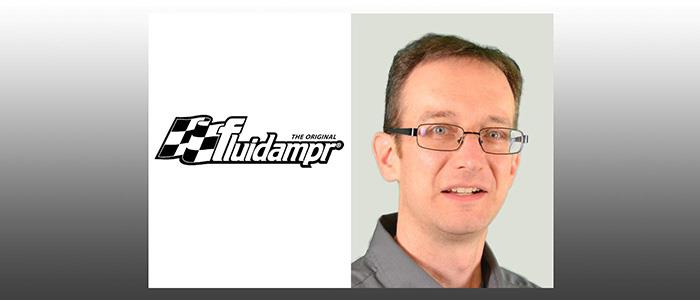

10/8/2021
TECH UPDATE: A PRIMER ON HARMONIC DAMPERS
UNDERSTANDING WHAT EXACTLY THESE PARTS DO AND THE DIFFERENT TYPES ON THE MARKET WILL HELP GUIDE RACERS TO THE RIGHT COMPONENT.
Brian LeBarron- The harmonic damper may be the most important and misunderstood part under the hood—so often mixed up in harmonic balancer nomenclature and keyboard mechanic lore that myths run wild.
Over the past 10 years I’ve produced educational content at a leading provider of powertrain vibration analysis and harmonic damper development. So let’s simplify it down to basics.
WHAT DOES IT DO?
A harmonic damper provides durability by reducing harmful crankshaft torsional vibration. Torsional vibration is the repetitive end-to-end twisting and rebounding of the crankshaft caused by internal combustion. With optimum torsional vibration damping, engine builders get peak performance over prolonged periods.
Torsional vibration is different than unbalanced vibration (corrected by weight balancing the rotating assembly) and axial vibration (corrected with main bearing support plate and thrust bearings). Only if a harmonic damper contains a crankshaft counterweight does it actually contribute to rotating assembly balance. Examples of externally balanced engines are some classic big block Chevy and small block Ford, and today’s Duramax and Power Stroke.
WHY DO YOU NEED IT?
Without optimum harmonic damping, torsional vibration will accelerate component wear (such as bearings), affect valve timing, and increase the risk of engine failure. When the torsional vibration frequency aligns with the natural frequency of the rotating assembly, a spike in vibration amplitude will occur. This spike may cause a two-piece crankshaft or oil pump graffiti, like a wine glass fracturing when the right musical pitch is hit.
Some people aren’t concerned with engine life and claim the added weight of a harmonic damper isn’t worth it. The truth is excessive vibration also robs power. It may sound counter-intuitive, but adding harmonic damper mass and optimum vibration control will allow the engine to run more efficiently and put up higher torque and horsepower.
WHEN TO UPGRADE? WHAT TYPE?
At the professional level, a complete NVH (noise, vibration, and harshness) analysis is performed and a harmonic damper is constructed to meet the goals of the team. This includes modeling the expected torsional vibration across the rpm range given the weights, composition, and spring stiffness of each rotating assembly component. Added factors like damping medium life and operating temperatures are also factored in. For the rest of us, although not as precise, there is a simpler way:
Check your damper. Most stock engines use a narrow range elastomer harmonic damper. Narrow range means that it is tuned to a brief frequency of the worse harmonics in the engine’s normal operating rpm. Elastomer dampers use a bonded rubber medium between the crank hub and inertia weight. When elastomer is over-worked it will crack, bulge, and deteriorate. Once this has occurred it has lost its effectiveness. Replace or upgrade if you notice this during routine inspection.
Rotating assembly. If you’re building from scratch or modifying the stock rotating assembly, it will affect where the resonant frequency(ies) will occur in the rpm range. Once again, resonant frequency is when a potentially damaging amplitude spike will occur. In this case, go straight to a high-quality broad range harmonic damper. Broad range means that it is designed to reduce torsional vibration across a wide frequency scale. Viscous dampers are broad range. Its effectiveness is the rate a free rotating inertia ring shears through the damping medium. Viscous dampers are common to high-end performance cars from premium brand OEMs.
Other types of harmonic dampers include multiple durometer elastomer O-ring, spring, and pendulum designs. Each has its advantages and disadvantages in how it minimizes torsional vibration.
WHICH TO CHOOSE?
Safety first. Before ever making a lap, be sure to check if a SFI 18.1 spec harmonic damper is required with your sanctioning body and class. SFI regulates the construction properties of the damper to ensure rotational integrity to 12,500 rpm. If it is, then your field of product options narrows to those designed specifically for motorsports.
Next, you may find harmonic damper offerings in different weights and diameters for the same engine. The general rule is more mass and a larger diameter will provide better damping and durability but prohibit quick revs. A lighter and smaller-diameter damper will allow for quick revs but sacrifice best damping and durability. It is the engine builder’s choice to determine which best suits the goals of the race team.
Lastly, not all harmonic dampers are created equal, even if they’re using the same basic technology. For example, an OEM viscous damper is not SFI 18.1 spec and not designed to preserve its damping medium under professional motorsports conditions. A premium viscous damper brand, such as Fluidampr, can be engineered for superior product life in extreme environments, such as 24-hour endurance racing. Top brands in the performance racing industry conduct extensive research and development toward continuous innovation. They have a stake in ensuring the long-term viability of motorsports through helping teams sustain durability.
When making your decision about what harmonic damper to run, think in terms of what will provide the best quality and longest lasting performance over the life of your engine. A little more investment in the beginning may save lots of expense and heartbreak over time.
Brian LeBarron is a representative of Fluidampr and OEM parent division, Vibratech TVD. He has over 20 years of motorsports product marketing experience and enjoys teaching industry colleagues. Through Fluidampr, he is a member of SEMA, plus SEMA MPMC and SEMA ETTN councils.
For complete story with tech images and graphs, click here
Article Credit: Brought to you by Performance Racing Industry